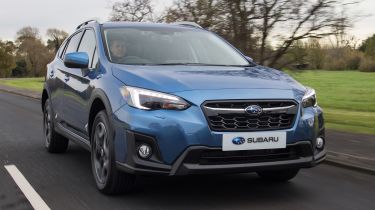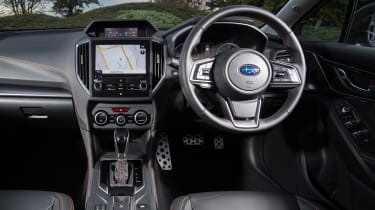New Subaru XV 2018 review
We drive the new Subaru XV in the UK for the first time to see if it's good enough to compete in the competitive crossover class
The new Subaru XV may not look particularly new on the surface, but there’s no doubting that it’s an improved car in several areas. Quality and kit levels have been boosted, and it’s better to drive, but the limited and lacklustre powertrain choices hold it back. It’s still not quite the car to push Subaru to the foreground of the crossover class though, and expensive PCP rates put it on a par with better all-rounders.
While Subaru is riding high with growing sales in North America, the Japanese marque has hit a stumbling block in the UK in recent times. The latest SMMT figures reveal that in 2017, 2,679 new Subarus were registered in the UK – a dip of almost 26 per cent on 2016.
The brand has strong customer retention, but it’s failing to tap into new buyers. With the new XV representing a fresh entry in the ultra competitive compact SUV segment, it has the potential to be the car that reaches out to that desired new customer base.
On the eye it may not look all that new, however. Subaru’s design team has penned a mild evolution of the previous model for what is a second-generation car sitting on a new platform. With little change in form the XV’s boot grows marginally to 385 litres, still on the smaller side for a car of this size. Cargo capacity still swells up to an impressive 1,270 litres with the rear seats folded flat though.
It’s a similar story in the cabin. The layout of the dashboard and infotainment displays is very similar to what has been before, but there’s a definite sense of improvement thanks to new soft touch materials and a more modern profile for the centre console stack. The fit and finish inside seems solid as well, while the eight-inch colour infotainment system – standard on all models and fitted with sat nav on SE Premium cars – is sharp and reasonably easy to use.
More reviews
Car group tests
In-depth reviews
Road tests
Used car tests
Though the XV’s slim range will leave buyers with little choice, the level of standard equipment, even on the base SE model, is good. Alongside that infotainment system, automatic LED headlights, power-folding heated mirrors, heated front seats, and a reversing camera are all standard fit.
The XV’s list of standard driver assistance features is strong too, with adaptive cruise control, autonomous emergency braking and lane keep assist all enabled by the EyeSight cameras placed either side of the rear view mirror. That system plays a big part in the XV’s five-star Euro NCAP rating.
Blind spot monitoring and rear cross traffic alert is also standard, as is the new X-Mode setting for off-road driving, complete with hill descent control. It means that the XV adds to its rugged looks with off-road competence that is often missing from crossovers this size.
With diesel dropped from the line-up, a new 1.6-litre petrol joins the range. However, the 2.0-litre boxer petrol driven here will account for the overwhelming majority of sales. The new XV is limited to a CVT transmission only, regardless of engine and spec. Alongside the 2.0-litre unit it ensures smooth and linear power delivery, making the most of the modest 196Nm of torque on offer. However, the same quirks that have always blighted CVT transmissions remain. Step harder on the throttle and the boxer unit under the bonnet loses its cool, revealing a less refined side to the XV as the revs soar uncomfortably.
Wheel mounted paddles enabling you to artificially ‘shift’ the CVT transmission’s ratio do help control the din to a certain degree, but they still don’t make the driving experience particularly engaging. It is comfortable, however - this new model rides with more composure than before. The steering itself is sharp, but there’s a fair amount of weight in the wheel that feels artificial.
Altogether, the new XV is certainly a more enticing option than the previous generation model. However, little is being done to incentivise new customers into considering it, especially when looking at the pricey finance deals Subaru touts. Low dealer deposit contributions and relatively high interest rates compared to the competition mean that you’re likely to find similarly specced rivals for less per month, while this range topping SE Premium 2.0-litre model wades close towards Audi Q3 territory.






